Are 3D Printed Houses The Next Big Thing? 5 Reasons Why.
Additive Building
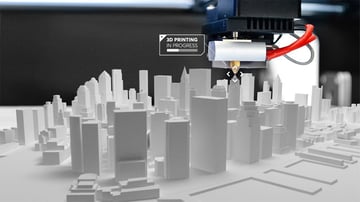
3D printing has actually long outgrown its preliminary rapid prototyping applications to end up being a fully-fledged manufacturing procedure. Known in the industry as additive manufacturing, it's being utilized for producing an ever-widening array of things, from oral implants to jet engine parts. It was just a matter of time prior to it reached the building industry.
In basic terms, 3D printed homes are constructed by transferring material in a layer-by-layer way. A paste-like concrete mixture is extruded through a nozzle that's directed by a massive gantry, creating walls from the ground up one layer at a time.
It does not sound complex in the beginning, and it really isn't. The implications of such a construction procedure, nevertheless, are immense. Still in its very early phases, it has actually currently revealed appealing outcomes and has actually rapidly caught the attention of the media.
The question is, is the hype around building 3D printing actually deserved? In this post, we'll dive deep into the subject and show why we believe 3D printed homes may just be the next big thing.
1. Faster Construction
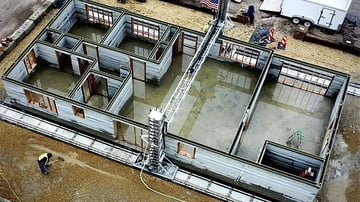
3D printing a home is significantly faster when compared to traditional construction techniques. While the actual time frame relies mainly on the project size, for the majority of cases, building takes just a matter of days.
Take, for instance, the very first fully-permitted 3D printed house in America, built by construction business Icon for the not-for-profit New Story in 2018. The 350-square-foot house in Texas took around 47 hours of print time spread out across a number of days.
Simply two years later on, another American business has actually constructed a massive 1,900-ft2 home in only 8 days, taking up to only 48 hours in total print time. Remember, nevertheless, that 3D printers can just create structures and external and internal walls.
Still, according to SQ4D, the business responsible for the task, that's a 40% reduction compared to routine construction methods. While it may not seem much in the beginning, construction 3D printing is still an establishing technology that still has much to be refined, so possibilities are building and construction times will minimize even further.
2. Minimized Labor
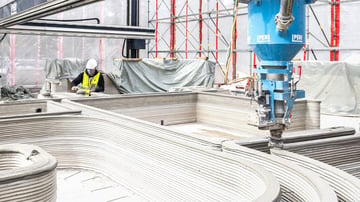
3D printing building websites require less laborers than traditional sites, as the printing equipment does the majority of the work.
Usually speaking, conventional building and construction needs lots of actions, consisting of an entire team of nine-to-fivers discharging, transferring, and blending materials before putting down structures. On the other hand, as soon as established, a concrete 3D printer just needs a handful of people to keep track of and control its structure process.
The aforementioned 1,900-ft2 home by SQ4D, for instance, would require as couple of as 3 people on website, replacing a team of over 20 manual laborers, according to the company. This goes to demonstrate how well-automated this whole process currently is, and why 3D printing houses is such an appealing option.
Moreover, fewer employees onsite also causes fewer job-related injuries and fatalities. According to OSHA statistics, building and construction alone is responsible for one in five employee deaths in the US. If done responsibly, 3D printing homes can help in reducing those numbers considerably.
3. Lower Cost

3D printed houses are reputedly more affordable to build, however this is somewhat arguable, as huge building 3D printers are costly devices and do still present many limitations. But let's keep it to facts and numbers.
We've already established that 3D printing a house is quicker than conventional building, and as the stating goes, time is money. Less time spent on site indicates that both the devices and the employees will be quicker readily available for other jobs, having theoretically double the construction capability with today's figures.
Include that to the considerably decreased variety of laborers required and the final costs must currently be cut to a portion of the initial worth. In addition, the raw products utilized by some 3D printers can be partly collected onsite, reducing expenses related to sourcing, saving, and carrying them to the site.
Now, to the numbers: Apis Cor's 410-ft2 home in Russia was said to cost roughly $10,000, consisting of all windows, roof, wiring, and interior finishing. That's staggeringly low. Icon is currently working on 600-ft2 houses that are prepared to cost just $4,000.
Yes, building and construction 3D printing equipment is still really expensive, much like any other advanced piece of technology. There's lots of room for enhancement and as the innovation advances, the expenses related to machinery and operation will certainly reduce.
4. Unique Opportunities for Development
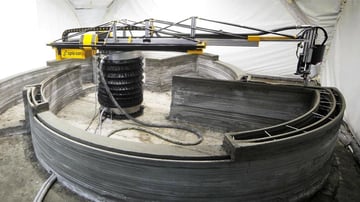
3D printing offers unique building chances that would be either difficult or too costly to be developed by means of standard building and construction methods.
Some state that, in order to get the very best out of any 3D printing process, one need to consider the high degree of style liberty provided by these innovations. This is likewise true for building and architecture, where innovation and imagination are specifically motivated.
The intrinsic nature of 3D printing allows for complicated shapes and forms to be produced without extra effort. For instance, a concrete 3D printer can produce intricately curved walls simply easily as straight ones. Unconventional architecture can improve how structures look from the outdoors and even optimize internal spaces.
Take for example the "Office of the Future" in Dubai, 3D printed by Chinese company Winsun and which hosts the Dubai Futures Foundation. The curved-shaped outside would need an extreme amount of work to be recreated utilizing conventional building techniques.
Engineers can likewise get innovative, as the printing feedstock products can be extremely tailored to attain much better residential or commercial properties. Out of the batch, concrete is currently a first-class product for building, resistant to a lot of environmental representatives such as fire and humidity, and likewise a great thermal insulator for cold and warm weather.
5. Higher Efficiency
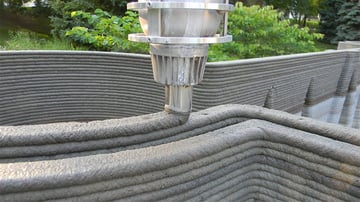
The procedure of 3D printing houses is more efficient in regards to energy and material usage when compared to standard building.
3D printing houses create less waste as they use only the needed amount of product to construct structures: There are no offcuts from cutting or sculpting materials. Moreover, as the concrete-based feedstock products are shapeless, any leftover can and need to be utilized in the next structure.
In addition, feedstock can be made out of recycled products. Back in 2014, the Chinese business Winsun had the ability to develop no less than 10 houses in one day using only recycled concrete product, whereas Italian 3D printing business WASP produced a home from natural mud mixed with waste materials from a regional rice production, that included sliced straws and rice husks.
3D printing homes also take less energy when compared to the entire production chain of routine building and construction. Consider all the energy needed from transferring basic materials and moving entire teams of workers to the construction site daily. By minimizing the amount of labor and by sourcing materials onsite, 3D printing can be more sustainable in the long run.
